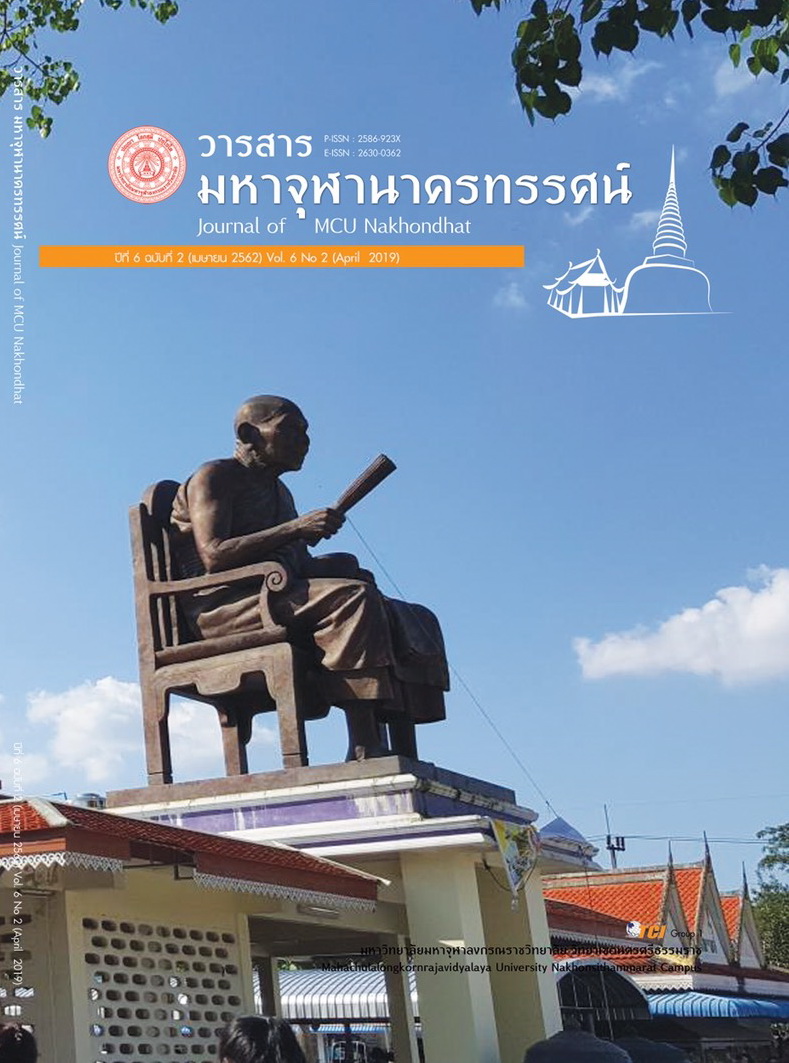THE EFFECT OF GENDER AND PERSONALITY DIFFERENCES IN YOUNG ADULTS ON THE EMOTIONAL VALENCE OF THAI TEXTS: EVENT-RELATED POTENTIAL STUDY.
Main Article Content
Abstract
This study is the purposes of this research were to design activities of looking at Thai texts which stimulated valence emotion in young adults and to study the valence emotion while looking at Thai texts between gender and personality of the participants. The participants were 80 students from Burapha University in the first semester academic year 2018. The instruments used in this research consisted of the activities of looking at Thai texts which stimulated valence emotional, Self-Assessment Manikin Thai Version. The data were analyzed by using 2-way ANOVA.
The research results were as follows:
- The activities of looking at valence emotional Thai texts consisted of 2 blocks and each block contained 15 stimuli which were pleasant and unpleasant emotions.
2. The differences of EEGs while looking at valence emotional Thai texts which classified by gender included pleasant and unpleasant had been found in Frontal Lobe: FP1 F3 Parietal Lobe: C3 Temporal lobe: T8 and Occipital lobe: PO3 PO4 OZ O2 classified by personality had been found in Frontal Lobe: FP1 FPZ F7 FC4 Parietal Lobe: C3 and classified by interaction had been found in Frontal Lobe: F8 Parietal Lobe: CP4 PZ Temporal lobe: T8 and Occipital lobe: PO3 POZ.
Article Details
References
Bradley, M.M., & Lang, P.J. (1994). Measuring emotion: The Self-Assessment Manikin and the semantic differential. Journal of Behavior Therapy and Experimental Psychiatry, 25(1), 49–59.
Bradley, M.M., & Lang, P.J. (2007). Affective Norms for English Text (ANET): Affective Ratings of Text and Instruction Manual. Technical Report No. D-1. Gainesville: FL: University of Florida.
Buechel, S., & Hahn, U. (2017). Studying the Impact of Annotation Perspective and Representation Format on Dimensional Emotion Analysis. Proceeding of the 15th Conference of the European Chapter of the Association For Computational Linguistics.
Costa, P.T., & McCrae, R.R. (1992). Revised NEO Personality Inventory (NEO-PIR) and NEO Five-Factor Inventory Professional Manual. Odessa. TX: Psychological Assessment Resources.
Coulson, S., King, J. W., & Kutas, M. (1998). Expect the unexpected: Event-related brain response to morphosyntactic violations. Language and Cognitive Pro-cesses.
Imbir, K. (2017). The Affective Norms for Polish Short Texts (ANPST) Database Properties and Impact of Participants’ Population and Sex on Affective Ratings. Front: Psychol.
Monnier, C., & Syssau, A. (2013). Affective norms for French words (FAN). Behav. Res. Methods.
Oldfield, R.C. (1971). The assessment and analysis of handedness: the Edinburgh inventory. Neuropsychologia.
Rachamanee, S., Kornpetpanee, S., & Wongupparaj, P. (2560). Development of the Computerized Dual-Task for Assessing Depression with Electroencephalogram Measurements for Thai Adolescents. Doctor of Philosophy. College of Research Methodology and Cognitive Science: Burapa University. (in Thai).
Sukchum, R., Chadcham, S., & Womgopajach, P. (2561). The Development of an Affective Thai Texts Norms Bank System. Doctor of Philosophy College of Research Methodology and Cognitive Science: Burapa University. (in Thai).
Sun, J., Wang, G., Cheng, X., & Fu, Y. (2015). Mining affective text to improve social media item recommendation. Information Processing & Management.
Yao, Z., Yu, D., Wang, L., Zhu, X., Guo, J., & Wang, Z. (2016). Effects of valence and arousal on emotional word processing are modulated by concreteness: Behavioral and ERP evidence from a lexical decision task. Int J Psychophysiol.


